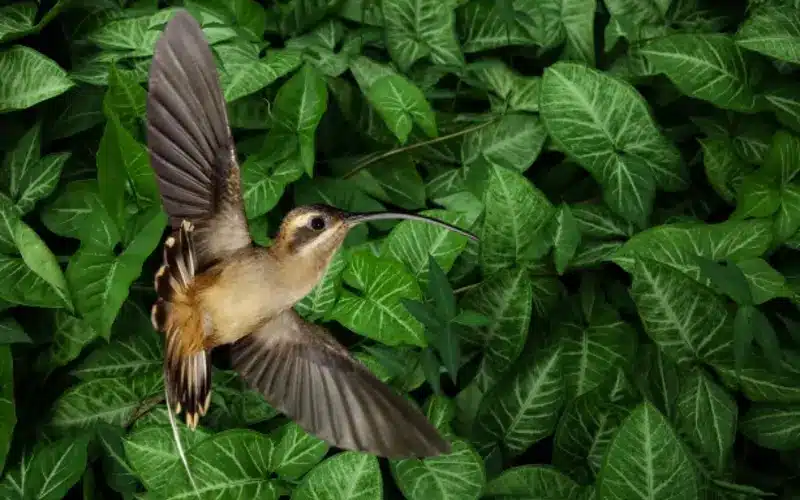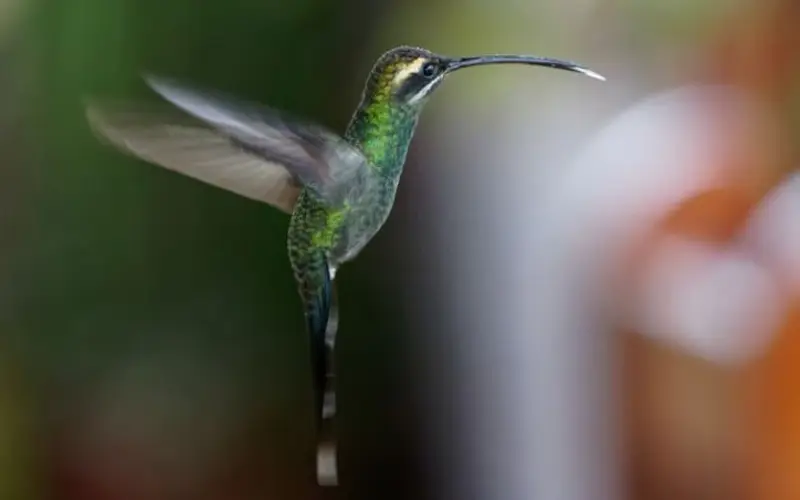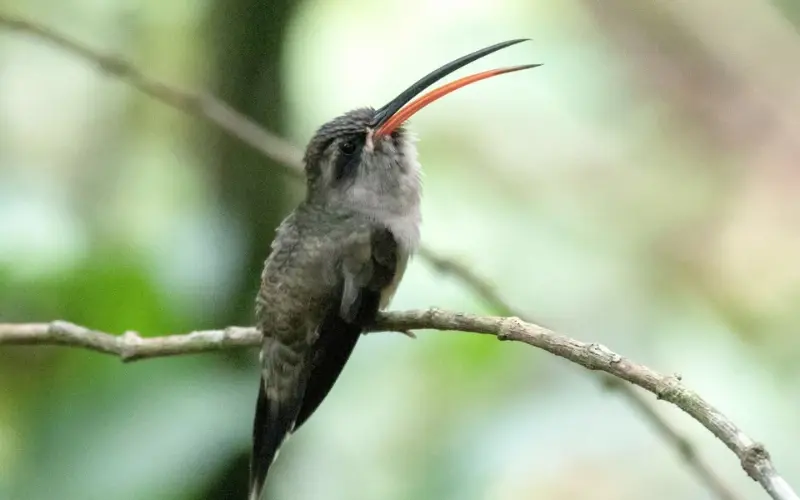The long-billed hermit (Phaethornis longirostris) is a bird in the Trochilidae family, the hummingbirds. It is found from central Mexico south to Central America, Colombia, and Ecuador to Peru.
Identification
A magnificent hummingbird of the humid tropical lowlands. Loves shady woodland understory and edges, especially with patches of Heliconia flowers. Males sit in the understory, blow their tails, and sing relentlessly. When feeding, long whites hover briefly with tail streamers that are nearly vertical and exit with an explosive hiss. Note the striped face, very long, arched bill, and rough feathers. Unlike many hummingbirds, hermits do not defend flower patches but zip between widely scattered flowers, a strategy known as training (like probing widely scattered nectar webs). ). ). doing).
Description
The long-billed hermit hummingbird is about 11-13 cm long and weighs 4-8 grams. As the name suggests, its most prominent feature is its very long, curved bill measuring 4-6 cm for males and 3.5-5 cm for females. This gives the bird access to nectar from flowers with corollas 7 cm or longer. The bill is black, thin, and curved.
Distribution and Habitat
The long-billed hermit hummingbird is found from Mexico through Central America to Bolivia, Brazil, Peru, and Guyana in South America. Its habitat includes tropical and subtropical moist lowland forests, plantations, orchards, and savannah forests.
This species is found in the foothills of the Andes Mountains at an altitude of 1600 meters. It is more common in forest edges and semi-open areas where birds prefer flowering plants.
Feed
As its name suggests, the long-billed hermit hummingbird is adapted to feeding on flowers with long, tubular corollas. Its distinctive curved bill allows it to access nectar from flowers that are inaccessible to most other hummingbird species.
Some of the favorite food plants of P. longirostris include long-flowered species in the genus Heliconia. The bird uses its bill as a pair of claws to open the petals of the Heliconia flower to reach the nectar at the base.
In addition to nectar, the long-billed hermit hummingbird supplements its diet by hawking small arthropods, including insects and spiders. It often catches insects in flight but also picks them up from plants using its bill.
Behavior and nesting

The long-billed hermit hummingbird is usually seen singly or in pairs, perching on low, exposed branches between feedings. Despite its long bill, it is quite agile in flight. Males conduct aerial courtship to attract females.
Cool facts about Long-billed hermit
1. Other important sources of nectar are Costus, Alpinia, Erythrina, Braunia, Centropogon, Drymonia, and plants of the Gesneriaceae family, including banana and palm flowers.
2. The long bill enables the bird to penetrate deeply into these tubular flowers.
3. The breeding season varies geographically but usually occurs during the rainy season between May and August.
4. The female builds a small cup nest under the plant and attaches it to a low horizontal branch or tree fork, laying two small white eggs. She lays eggs alone for 15-19 days.
5. Both parents feed the chicks regurgitated food. Eggs hatch approximately 20-26 days after hatching. Couples can produce more than one brood in a season.
localization
The songs of the three northern subspecies of the long-billed hermit are “a continuous series of single, piercing, usually annoying ‘ sweep-up’ notes”. Their call is “a sharp, explosive ‘Shiva!'” often given in flight. PL’s song Barony is “a continuous series, like a bird, of scurrying notes…’chee..chee..chee…'”. Its call is “a thin oyster,” uttered in flight.
Condition
The IUCN follows the HBW classification and has separately assessed the long-billed hermit and the “Ecuadorian hermit” as the least concern. The population sizes and trends of both are unknown. Susurrus has a small range, which makes it potentially endangered. PL cephalus is found in many protected areas in Costa Rica. PL Baroni is considered fairly common throughout its range and occurs in some protected areas.














